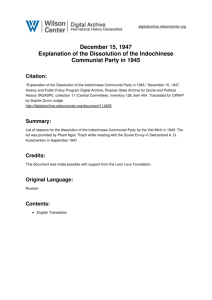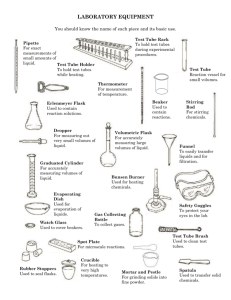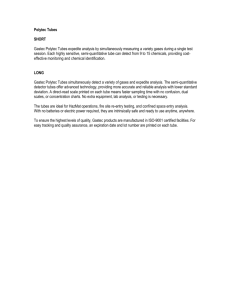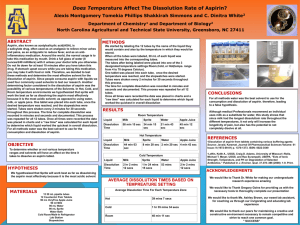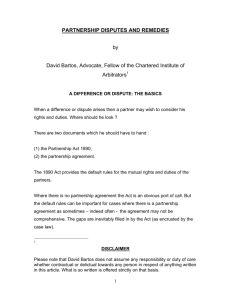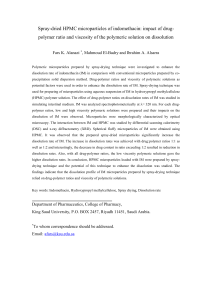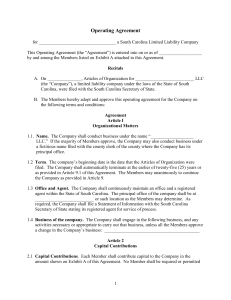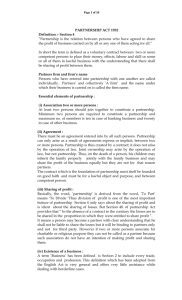Dissolution behaviour of binary mixtures in capillary tubes
advertisement
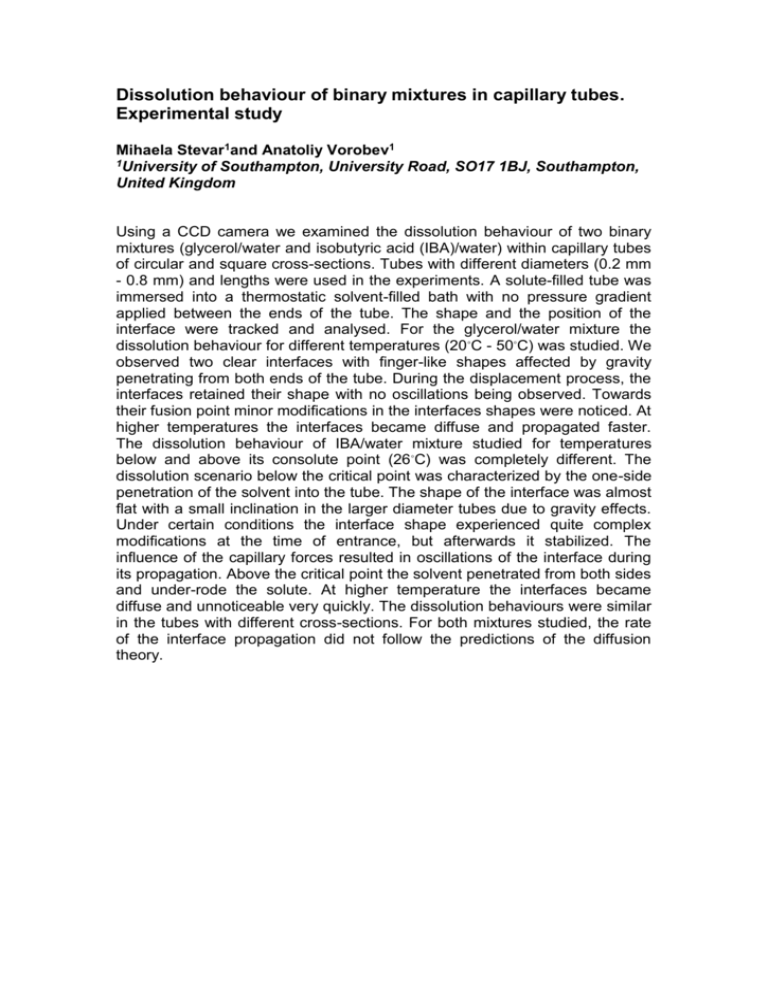
Dissolution behaviour of binary mixtures in capillary tubes. Experimental study Mihaela Stevar1and Anatoliy Vorobev1 1University of Southampton, University Road, SO17 1BJ, Southampton, United Kingdom Using a CCD camera we examined the dissolution behaviour of two binary mixtures (glycerol/water and isobutyric acid (IBA)/water) within capillary tubes of circular and square cross-sections. Tubes with different diameters (0.2 mm - 0.8 mm) and lengths were used in the experiments. A solute-filled tube was immersed into a thermostatic solvent-filled bath with no pressure gradient applied between the ends of the tube. The shape and the position of the interface were tracked and analysed. For the glycerol/water mixture the dissolution behaviour for different temperatures (20◦C - 50◦C) was studied. We observed two clear interfaces with finger-like shapes affected by gravity penetrating from both ends of the tube. During the displacement process, the interfaces retained their shape with no oscillations being observed. Towards their fusion point minor modifications in the interfaces shapes were noticed. At higher temperatures the interfaces became diffuse and propagated faster. The dissolution behaviour of IBA/water mixture studied for temperatures below and above its consolute point (26◦C) was completely different. The dissolution scenario below the critical point was characterized by the one-side penetration of the solvent into the tube. The shape of the interface was almost flat with a small inclination in the larger diameter tubes due to gravity effects. Under certain conditions the interface shape experienced quite complex modifications at the time of entrance, but afterwards it stabilized. The influence of the capillary forces resulted in oscillations of the interface during its propagation. Above the critical point the solvent penetrated from both sides and under-rode the solute. At higher temperature the interfaces became diffuse and unnoticeable very quickly. The dissolution behaviours were similar in the tubes with different cross-sections. For both mixtures studied, the rate of the interface propagation did not follow the predictions of the diffusion theory.




